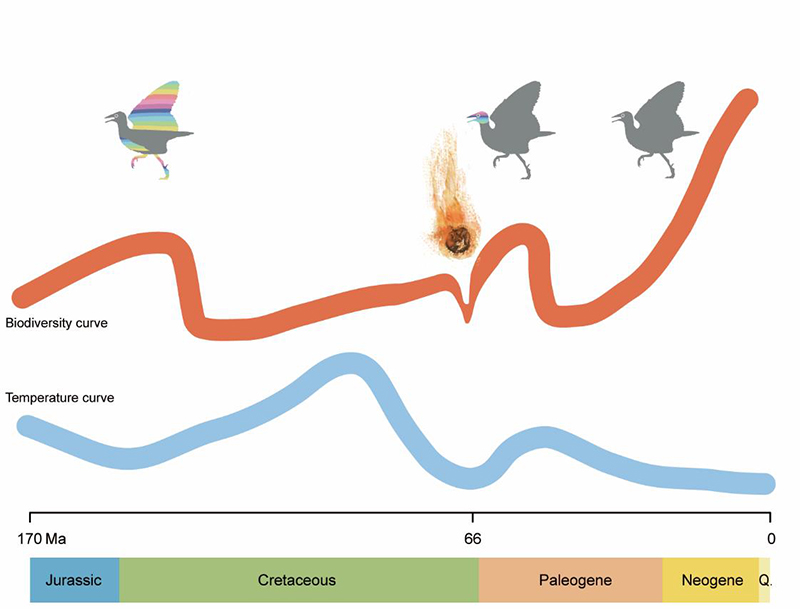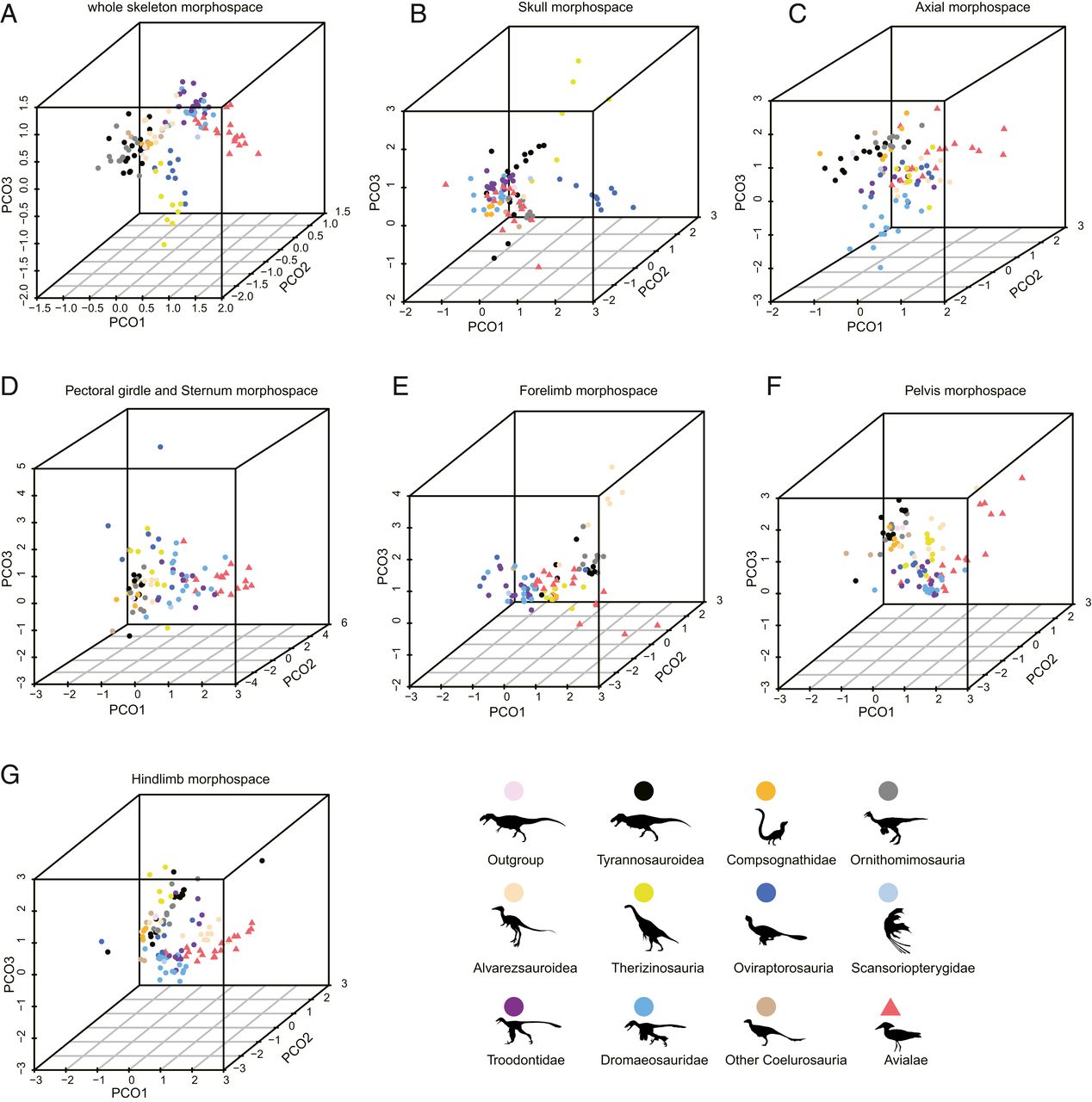| Location: Home > Research > Research Progress |
| Climate Change Influences Biodiversity Evolution of Birds: Study |
|
A research team from the Institute of Vertebrate Paleontology and Paleoanthropology (IVPP) of the Chinese Academy of Sciences found that the biodiversity evolution of birds had been influenced mainly by long-term climatic changes and also by the K-Pg extinction. The study was published in PNAS on Feb. 22. Dr. ZHANG Chi and Dr. XU Xing from IVPP and their co-supervised student YU Yilun reconstructed the macroevolutionary pattern of bird biodiversity in a unified evolutionary framework by integrating molecular phylogenies of crown birds and fossil data from stem birds and non-avian coelurosaurs. They found that there were three distinct large-scale increases in the diversification rate across bird evolutionary history. “The first two increases were associated with rapid morphological evolution pertaining to the locomotory and cranial systems, respectively,” said YU, the first author of the study. The first increase, which began at ~165Ma and reached its peak at ~135 Ma, corresponded to an accelerated morphological evolutionary rate associated with the locomotory systems among early stem birds. “This radiation resulted in morphospace occupation that is larger and different from their close dinosaurian relatives, which demonstrated the occurrence of an adaptive radiation among early stem birds was probably related to the invasion of a new ecospace,” said Dr. ZHANG. The second increase, which started ~90 Ma and reached its peak at ~60 Ma, was associated with rapid evolution of the cranial skeleton among early crown birds likely related to diversification in diet and foraging behavior, and was driven differently from the first radiation. The third increase, which occurred after ~40-45 Ma, has yet to be supported by quantitative morphological data, but it gains some support from the fossil record and molecular data. “Although the radiations of early stem and early crown birds appeared to have been driven by different factors in selection from the perspectives of functional morphology and ecology, the reconstructed lineage diversification rates of birds were in general negatively correlated with global temperature curves from the Jurassic to the recent,” said Dr. XU. Previous studies suggested that the diversity of crown birds was driven by climate-induced vicariance such as the fragmentation of megathermal forests and allopatric speciation during cooling periods. The new study suggested that the diversity of stem birds was probably driven by the same factor. Besides, the Cretaceous-Tertiary extinction event was also responsible for the dynamics of bird biodiversity. The extinction wiped out stem birds and the volant pterosaurs, providing an ecological release and facilitating the radiation of crown birds in the earliest Paleogene. The study was supported by the Strategic Priority Research Program of Chinese Academy of Sciences and the National Natural Science Foundation of China. Link: https://www.pnas.org/content/118/10/e2019865118
Fig. 1 The biodiversity evolution of birds influenced mainly by long-term climatic changes and also by the Cretaceous-Tertiary extinction event (Image by REN Minghui)
Fig. 2 Morphological disparity analyses showing the differences between birds and their dinosaur relatives (Image by IVPP) |

